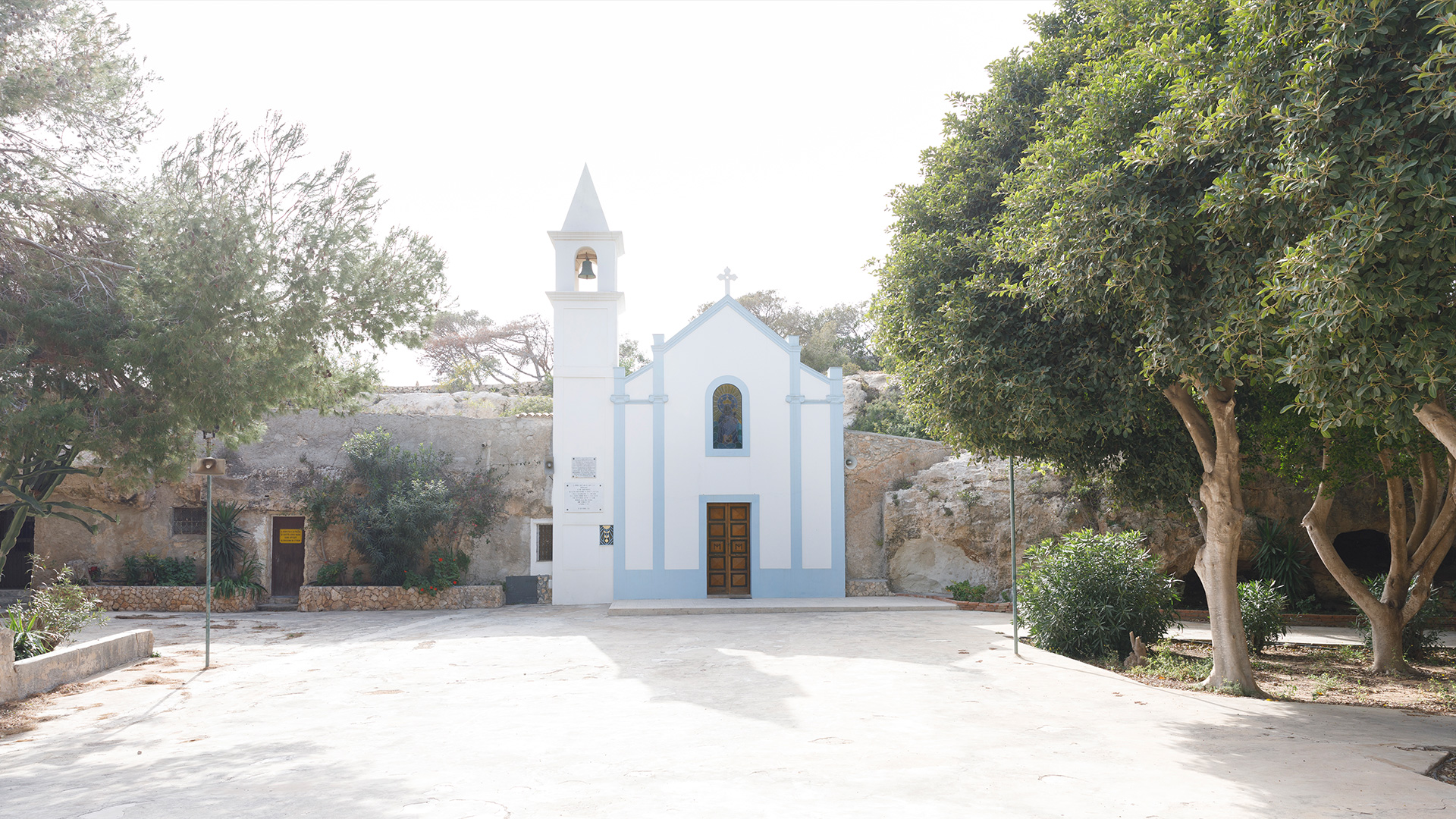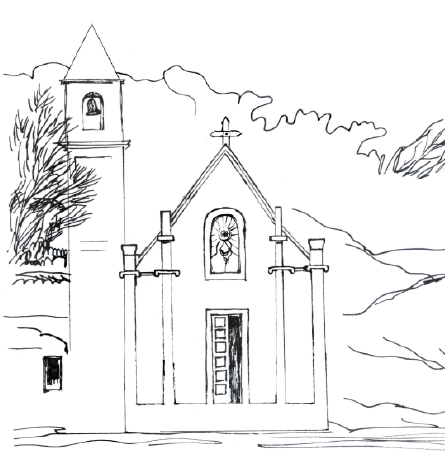Il Santuario della Madonna di Porto Salvo e la Grotta dell’Eremita
35°30'22.9'' N 12°35'26.2'' EIl Santuario della Madonna di Porto Salvo e la Grotta dell’Eremita
35°30'22.9'' N 12°35'26.2'' E
Where our fantasies live
There is a lonely island, in a lonely blue sea
Cesare Righi
It seems to cross the silence when walking through the threshold of the Sanctuary of Lampedusa dedicated to the Madonna of Porto Salvo. The first traces of the place of worship date back to 1202, at the time of the fourth crusade, until its partial destruction during the Second World War. Yet the statue of the Madonna, protector of the island, remained intact, when Lampedusa itself was deeply damaged by bombing that also destroyed the temple of the patron saint, without, however, making any victim, nor cause any damage to the simulacrum that depicted Her. This thing was interpreted as a sign of the power of the Blessed Virgin and grew even more devotion to the patron saint of the island.
The Lampedusians rebuilt it and, every year, on September 22, they celebrate the patron saint with a procession during which the statue of the Madonna – weighing 150 kilos and not to be mistaken with the one that since 1993 welcomes those who arrive at the port – is carried on the streets by the faithful through the streets of the island.
Walking through the lanes of the sanctuary, in the shade of the natural caves and its trees, near the wells and the church, passing by the votive chapel, seems to cross the time.
Endless are the legends linked to this place, starting with the Madonna. A portrait in the church tells of a shipwreck, on a wreck, which carries the statue. Tradition has it that it arrived from the sea.
The first historical evidence dates back to 1569, when the writer Fazello told of “a chapel consecrated to Mary in a cave”. But in a more precise and detailed way we can date back to the nineteenth century the origins of the devotion to the Blessed Virgin, when Bernardo Maria Sanvisente, governor of Lampedusa, as well as a naval officer of King Ferdinand II of Bourbon, built the first historic building in honour of Maria Santissima di Porto Salvo. The same Sanvisente in 1843 instituted the patronal feast of September 22 and, in a report sent to the king, the governor spoke of the cave as a place of worship, divided into Catholic church and Mohammedan mosque. It is thought, in fact, that this sanctuary was born as a place of Muslim hermitage inside a cave in the seventh century. Caves have always represented a place of prayer and hermitage. According to the stories handed down by the islanders, around 1500 a hermit named Andrea would have found a home there and – precisely – he welcomed without distinction of faith those who wanted to pray. Over centuries, the cave of Lampedusa became a place where Christians and Muslims used to pray. A part of the cave where a Turkish marabout is buried is used by Muslims, another part instead, characterized by a vermilion red cross on the floor, is used by Christians. The figure of the Madonna is venerated by both believers; also Islam venerates Mary as mother of the prophet Jesus, the only woman to be called by name in the Koran. The Madonna of Porto Salvo is also venerated in other seaside locations, such as Amalfi, Gaeta and in Calabria.
A place for the faithful, of all creeds, but also of peace. Because the sanctuary was a place of truce, at the time of piracy in the Mediterranean, where pirates and sailors who hunted them rested, filled up with water and wood, before leaving again. And it is precisely from the truce that we can begin to confront each other, on the road to peace.




